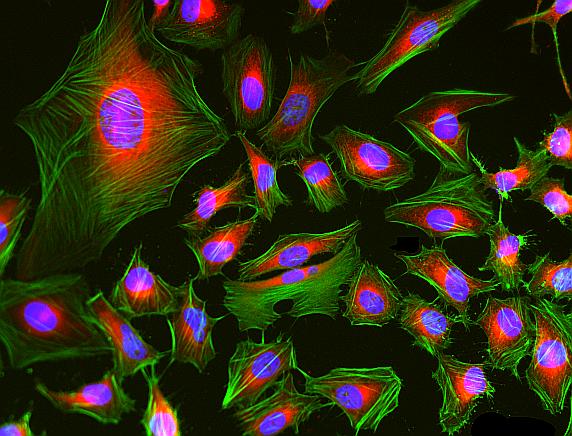
The phalloidin molecule, a bicyclic peptide, binds specifically to F-actin, preventing the filaments from depolymerizing. This is very useful in the laboratory, since it hyperstabilizes the actin filaments. In larger doses, phalloidin and the other members of the phallotoxin group are lethal to living organisms. Produced by the Death Cap mushroom (Amanita phalloides) the toxin is fatal in a matter of days, since the actin binding quickly causes cytotoxicity and death, particularly in mammalian liver cells.
In the lab, the small amounts used are typically not dangerous to researchers, although proper care should be taken for correct laboratory safety protocols. Because of its toxicity and the impermeable nature of most phalloidin conjugates, the tagging is usualy limited to use with permeabilized tissues or fixed cells, although modified procedures and materials have allowed for some use with living cells.
References:
Thomas D. Pollard, William C. Earnshaw, ... Graham T. Johnson (2017) Cell Biology (3rd Edition), 575-591. https://doi.org/10.1016/B978-0-323-34126-4.00033-5
